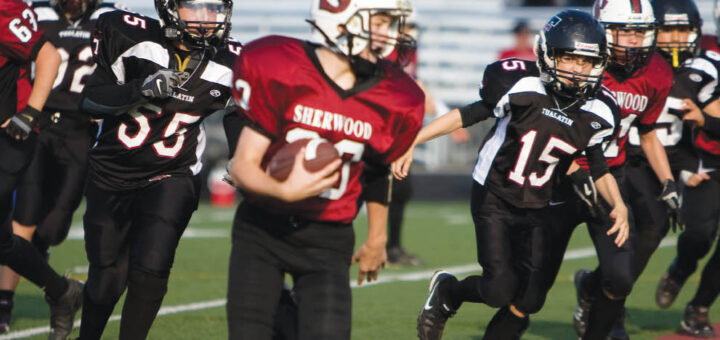The case for high school sports

By Gage Smith, Sports Editor
The world of sports in the 2020s is pretty different from that of the old days. Most professional athletes would put their feet up and take a vacation during the offseason. A smaller proportion of them had personal trainers and dieticians watching their every move. In the early days of the NBA, there were players who’d actually smoke at the halftime breaks of games!
Sports medicine has evolved rapidly, and with it, our knowledge of what’s good and what’s bad for athletes’ health. Parents of high school athletes have become aware of these advancements which include newly discovered risks for their children. But what parents should know is that with these advancements in sports medicine also comes much more knowledge on the benefits sports has for their children.
For example, the world has recently started to get a grasp of the impacts of the head injuries football players can be exposed to. They can sustain concussions and sometimes even chronic traumatic encephalopathy (CTE), which is brain degeneration caused by repeated head trauma.
This increased awareness has been an overwhelmingly good thing. It extends careers, preserves the quality of life for athletes and may even save lives. But it can also be scary for parents to know exactly what they might be getting their children into when enrolling them in youth sports leagues.
Parents are acutely aware now that the risk of their child developing problems such as CTE is low but real. With all of the new unnerving research coming out about CTE and other long-term ailments that can come from playing sports, parents may be tempted to look at the potential cost and overlook the benefits of putting their kids in sports. But the benefits are also very real.
At Your Own Risk, an organization dedicated to supporting the public’s effort to promote safety in work and in sport, gathered research that shows just how beneficial high school sports can be.
For starters, participants in high school sports have consistently higher grades than non-participants and are 15 per cent more likely to go to college. Female athletes are also 73 per cent “more likely to complete a college degree within six years of graduating high school.”
The benefits aren’t just in the classroom. Take a look at this statement from At Your Own Risk:
“Student athletes manifest stronger peer relationships, better attachment with adults, higher self-esteem, a closer sense of family and participate more in volunteerism. They are less likely to engage in high risk behavior. They have a greater sense of initiative, persistence and personal responsibility. A survey of over 14,000 teens found that those who participated in team sports were less likely to use drugs, smoke cigarettes and carry weapons.”
These benefits will undoubtedly change the trajectory of your kid’s life. And that’s just scratching the surface of it; these are just the benefits that can be measured and researched.
A good coach can change a person’s life. The bonds players can form with their teammates are different from other friendships, having kind of “gone to war” together. And having something to work at every day, having a game to look forward to, can make all the difference for a teenager’s mental health.
The more we know about injuries, the scarier they can seem. But it’s important to remember that we’re also learning more about just how healthy sports are for youth. The risk is there, but sports are more than worth it.



